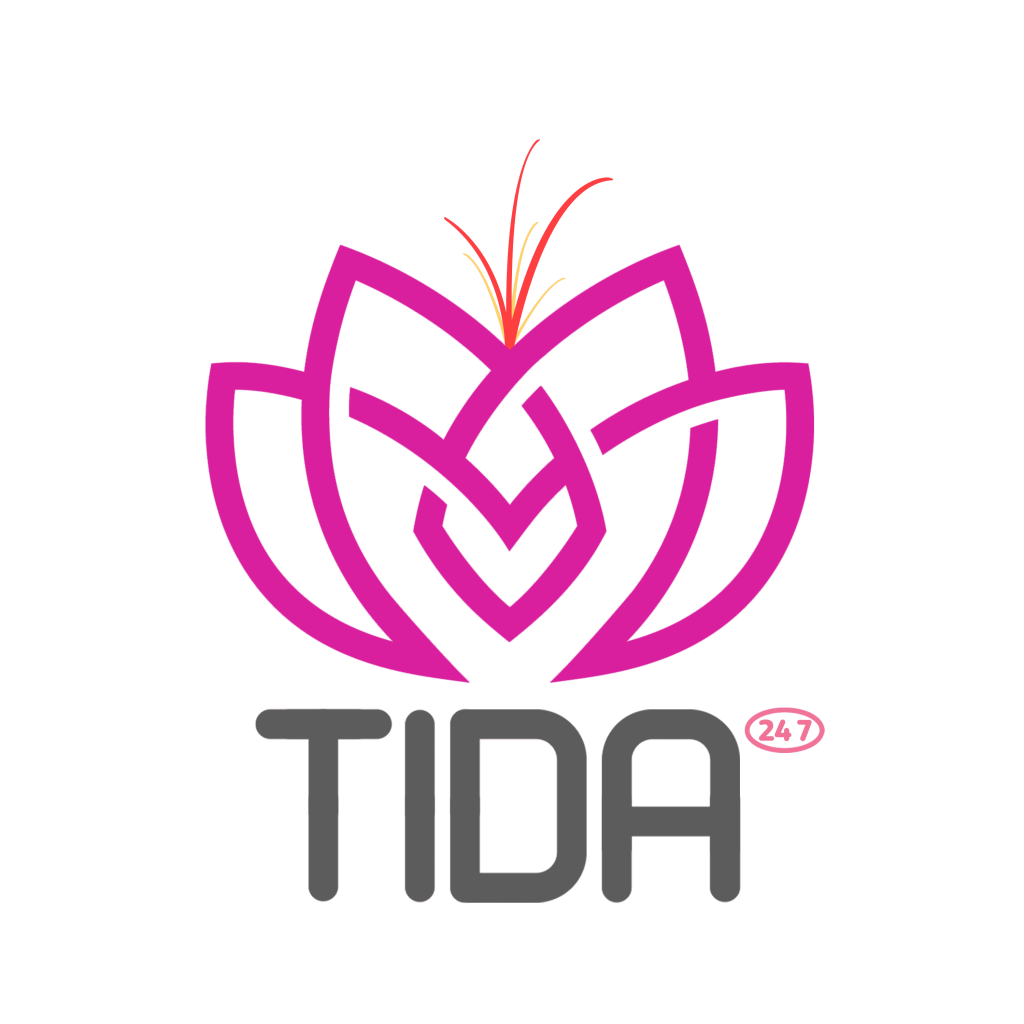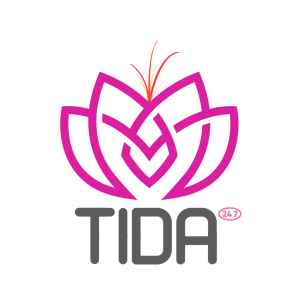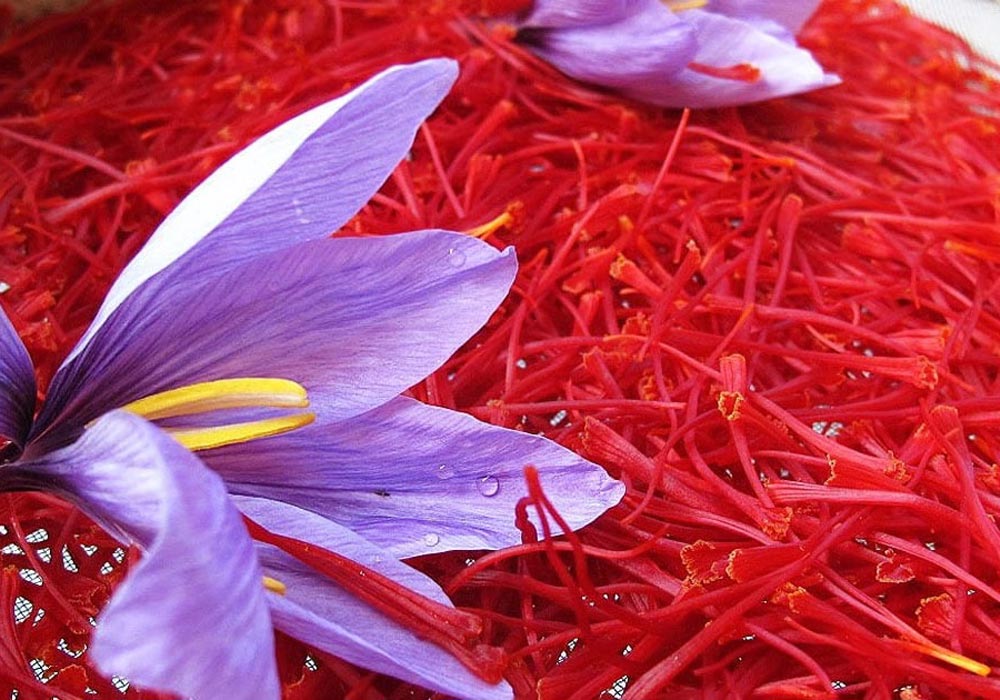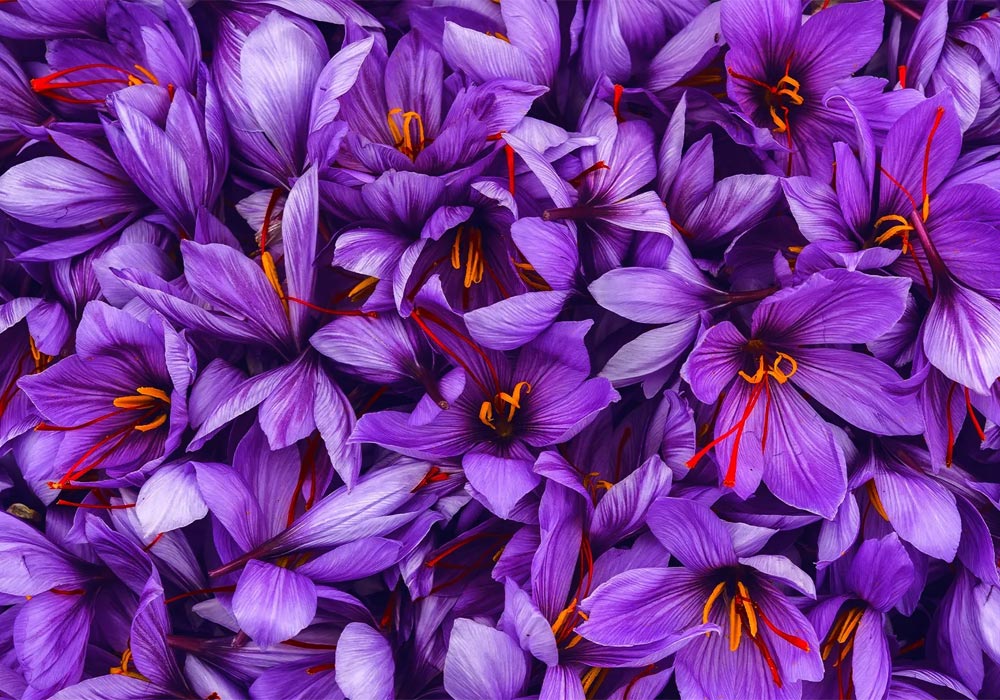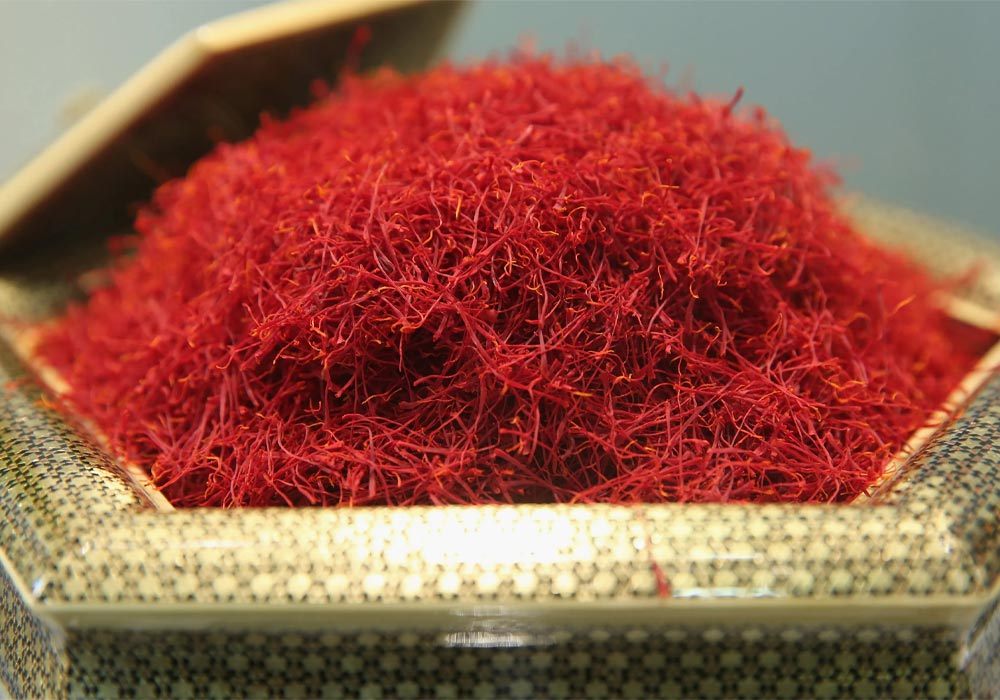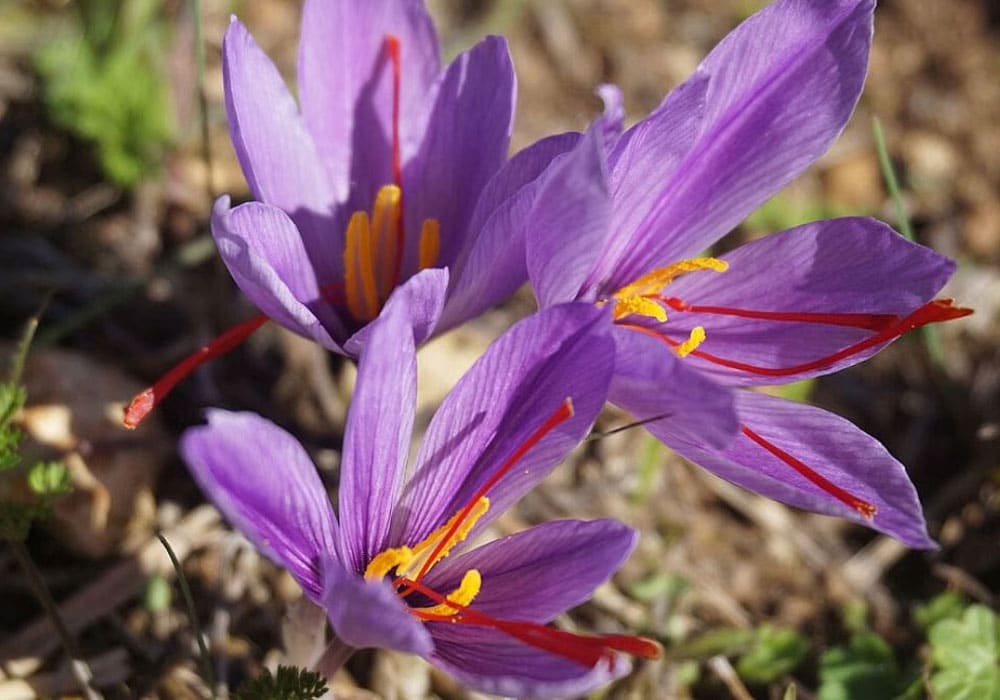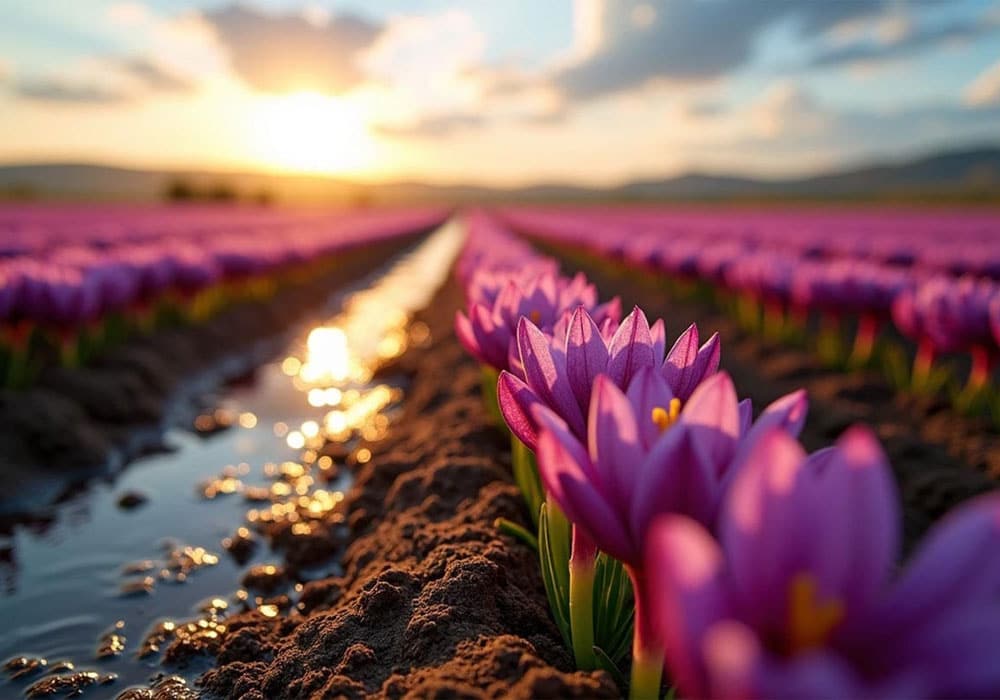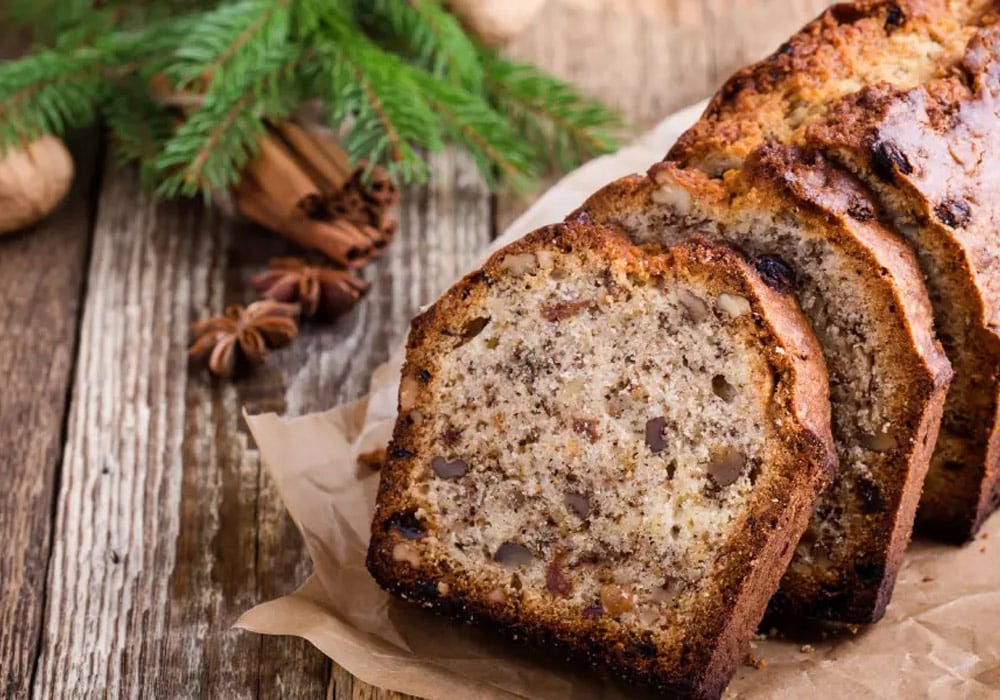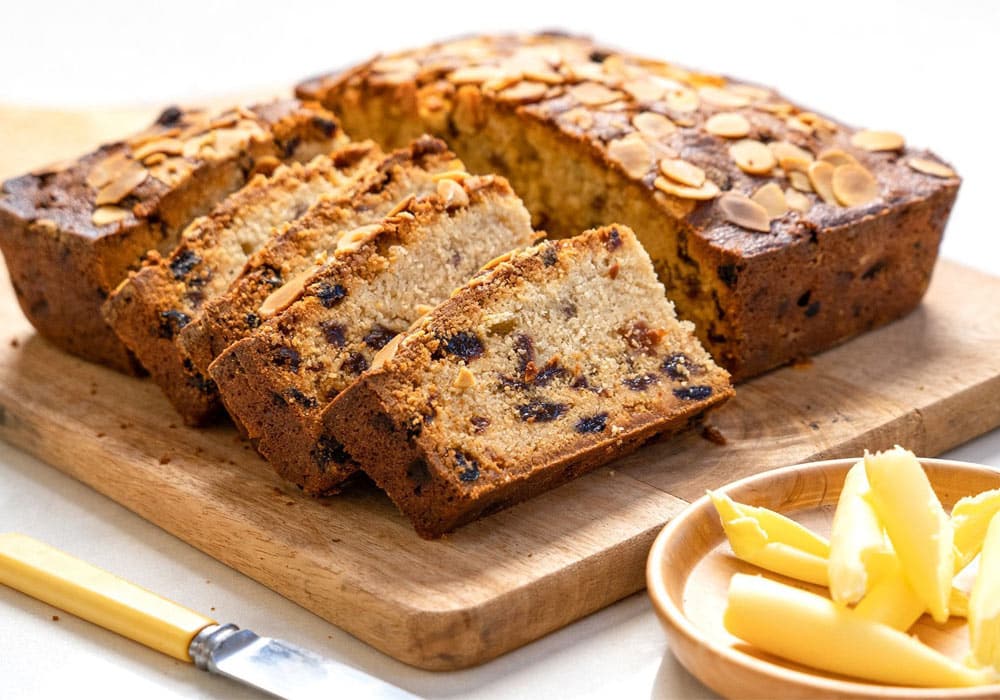Saffron, known as the “Red Gold,” is one of the most valuable and expensive spices in the world. Besides its extensive uses in cooking, it holds a special place in both traditional and modern medicine. Iran is recognized as the largest producer and exporter of saffron worldwide, holding a significant share of the global market. But the important question is: what differences does Iranian saffron have compared to saffron from other countries? In this article, we provide a comprehensive and detailed examination of this subject.
History and Origins of Saffron in Iran and Worldwide
The cultivation of saffron in Iran has a history spanning several thousand years. Regions such as Razavi Khorasan, South Khorasan, and some other eastern provinces have long been centers of saffron cultivation. Traditional agricultural knowledge, suitable climatic conditions, and the experience of multiple generations have enabled Iran to produce saffron of the highest quality.
In contrast, other countries like Spain, India, Afghanistan, Greece, Morocco, and Italy also cultivate saffron. Each of these countries has its own unique climatic, cultural, and technical characteristics that affect the quality and features of the final product.
Impact of Climatic Conditions on Saffron Quality
Saffron is a plant that requires low water, light soil, and dry air. Especially in Iran’s dry and semi-dry regions, ideal conditions exist for the growth of this plant. These conditions have resulted in Iranian saffron stigmas having unmatched aroma, color, and taste.
Spain primarily produces saffron in the La Mancha region, which has a different climate, and its saffron is mostly famous for its high coloring power. Afghanistan and India also have different climatic conditions, where water instability and agricultural challenges have affected the final product quality.
Criteria for Measuring Saffron Quality: Color, Aroma, and Taste
There are three main indicators for assessing saffron quality:
- Coloring (Crocin): The amount of orange-red color saffron imparts to food or water.
- Aroma (Safranal): The distinct and pleasant smell of saffron.
- Taste (Picrocrocin): The bitter and unique taste of saffron.
Research shows that Iranian saffron has the highest levels of these three compounds, resulting in deeper color, stronger aroma, and longer-lasting taste. Spanish saffron is better known for its coloring, but its aroma is comparatively less intense.
Harvesting and Drying Process
One of the major differences between Iranian saffron and that of other countries is in harvesting and processing methods. In Iran, saffron harvesting is done entirely by hand and with great care to avoid damage to the stigmas and preserve quality. After harvesting, the flowers are quickly transported to the site where the stigmas are separated, then dried at controlled temperatures.
In some other countries, harvesting may be done by machines or less carefully, which can reduce quality and damage the stigmas. Also, drying in these countries may be done at high temperatures or by improper methods, leading to loss of aroma and flavor.
Physical Differences between Iranian and Foreign Saffron
Iranian saffron usually has long, thick, three-branched stigmas with a dark red color tending toward brown. These features give Iranian saffron a more attractive appearance and higher quality. In contrast, saffron from other countries may have shorter, thinner, and lighter-colored threads, affecting quality.
Additionally, Iranian saffron contains a very low percentage of the white part of the flower (style), whereas some foreign samples contain higher amounts of this, which lowers their quality.
International Standards and Saffron Grading
The International Organization for Standardization (ISO 3632) has established criteria for grading saffron based on its coloring, aroma, and taste. Iranian saffron often ranks in Grade 1 or the highest quality level.
Saffron produced in other countries may fall into lower grades, meaning lower quality and weaker coloring power. Paying attention to these grades is crucial for buyers and exporters.
Environmental Impact of Saffron Production
Saffron farming is considered sustainable due to its low water consumption. Iran, with proper water resource management in its dry regions, has been able to practice sustainable saffron agriculture.
In other countries such as Afghanistan and India, improper use of fertilizers and pesticides has sometimes led to environmental pollution and reduced product quality.
Role of Technology in Quality Improvement and Marketing
In recent years, Iran has utilized modern technologies such as temperature-controlled drying machines, professional packaging, and digital quality control technologies to improve saffron’s quality and shelf life.
Other countries are also trying to adopt new technologies but have not yet reached Iran’s level due to financial and infrastructural limitations.
Economic Role of Saffron in Iran and the World
Saffron is a vital source of foreign currency for Iran, creating thousands of direct and indirect jobs. Iran accounts for about 90% of the world’s saffron production, with a large share of the country’s non-oil exports coming from it.
Countries like Spain and Afghanistan are expanding their production and exports, but their market shares are still not comparable to Iran’s.
Market Problems and Challenges
One of the biggest challenges in the saffron market is fraud and adulteration. Due to saffron’s high value, counterfeit or adulterated samples mixed with substances like safflower or artificial colors are found in the market.
Because of the higher Iranian saffron price, it is more vulnerable to fraud, making it very important for buyers to verify the authenticity of the saffron.
Tips for Buying Genuine Saffron
- Appearance: Saffron threads should be long, red, and naturally dried.
- Coloring: The soaked water should turn red to orange without unnatural colors.
- Smell: The scent should be natural and strong.
- Price: Very low prices usually indicate adulteration or fraud.
- Purchase from reputable stores: Always buy from trustworthy shops and well-known brands.
Future Outlook of the Global Saffron Market
With growing demand for natural and organic products, the saffron market is expanding. Iran, with the best quality saffron, has great potential to develop new markets.
Investing in new technologies, strong branding, and creating value-added processed products such as saffron extracts, cosmetics, and dietary supplements can strengthen Iran’s position in the global market.
Other countries can increase their market share by improving quality, developing agriculture, and marketing, but the gap with Iran remains significant.
Buying High-Quality Saffron at Competitive Prices Only at Tida Saffron
Purchasing premium saffron at competitive prices is only possible at Tida Saffron. Tida Saffron offers the best quality authentic Iranian saffron, enabling customers to easily acquire high-quality saffron at a reasonable Iranian saffron price. The price of Iranian saffron at Tida Saffron is set in a way that preserves its exceptional quality while being affordable for all buyers. By purchasing from Tida Saffron, you can be confident in the product’s authenticity and fair pricing, ensuring a reliable and satisfying experience.
Conclusion
In conclusion, the comparison between Iranian saffron and saffron from other countries demonstrates that Iran, by leveraging unique climatic conditions, a long agricultural history, and precise harvesting and processing methods, has been able to produce the highest quality saffron in the world. Due to its superior coloring power, distinctive aroma and taste, and excellent quality standards, Iranian saffron holds a special place in the global market that other producers have yet to match. Moreover, advances in modern technology and sustainable resource management have preserved this competitive advantage. Considering its economic value and critical role in Iran’s exports, the future of this industry remains bright and prosperous. Buyers can confidently purchase premium saffron at reasonable Iranian saffron prices from reputable brands like Tida Saffron. In summary, Iranian saffron will remain the unrivaled “Red Gold” in the global market.
also read:
